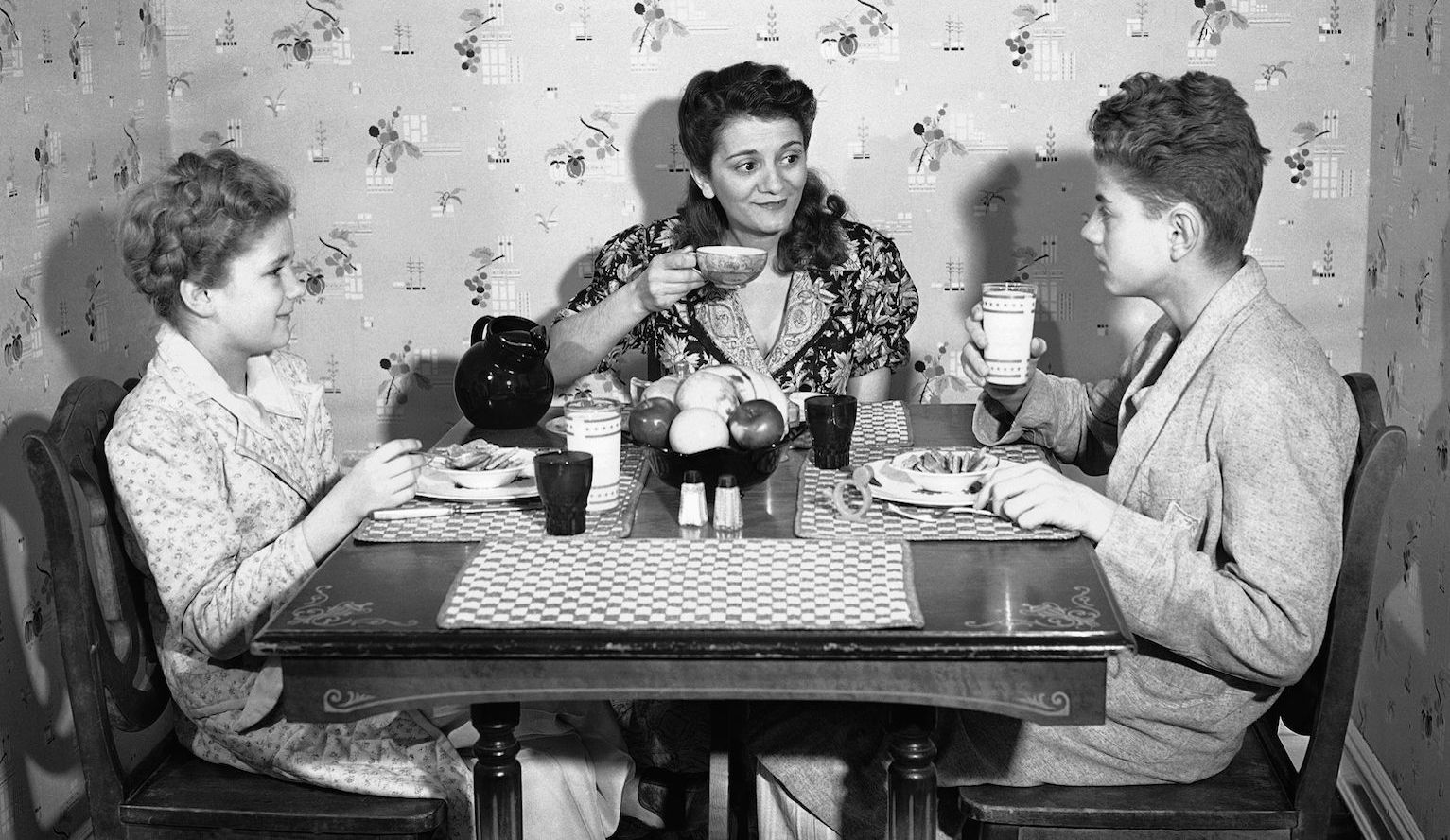Anorexia: Psychological treatments
 As with drug therapies, there is not a lot of strong support for psychological approaches to the treatment of anorexia nervosa. The treatment of people living with anorexia nervosa has two distinct components. The first goal of physicians is to make sure that the patient gains enough weight in order to avoid medical complications and possibly death. The second goal is to use psychotherapy to encourage weight gain and develop coping strategies to avoid future relapse.
As with drug therapies, there is not a lot of strong support for psychological approaches to the treatment of anorexia nervosa. The treatment of people living with anorexia nervosa has two distinct components. The first goal of physicians is to make sure that the patient gains enough weight in order to avoid medical complications and possibly death. The second goal is to use psychotherapy to encourage weight gain and develop coping strategies to avoid future relapse.
Psychotherapy involves face-to-face interactions with a therapist. It is seen as more personal than drug therapy and can be individualized to meet the needs of the client. Generally, psychotherapy is more focused on addressing a person's life situation and subjective understanding of his or her psychological problems.
Psychotherapy helps people identify unhealthy thought patterns and behaviours as well as suggesting strategies to manage stress and symptoms. A therapist often works with an individual alone, but may also include family members in therapy sessions. Research has shown that psychotherapy is effective for some patients with anorexia.
Cognitive behavioural therapy
Cognitive-behavioural therapy [CBT] is a blend of two therapies: cognitive therapy and behavioural therapy. According to Aaron Beck, one of the pioneers in cognitive therapy, psychological problems are associated with maladaptive thinking patterns and unhealthy behaviours that can be changed through a working relationship between the client and a therapist.
The cognitive-behavioral model emphasizes the important role that both thoughts (cognitive) and actions (behavioural) can play in maintaining an eating disorder. Examples of maintaining factors include:
- Cognitive Factors ~ over-evaluation of weight and shape, negative body image, low self-worth, negative self-evaluation, perfectionism.
- Behavioral Factors ~ weight-control behaviours including dietary restraint, restriction, binge-eating, purging behaviours, self-harm, body checking and body avoidance.
 In contrast to more traditional forms of psychotherapy that are concerned with a person’s past history, CBT focuses on current issues and symptoms. CBT helps the individual examine which thoughts and behaviours are maintaining their disorder and to set personalized goals that are addressed throughout the various phases of CBT.
In contrast to more traditional forms of psychotherapy that are concerned with a person’s past history, CBT focuses on current issues and symptoms. CBT helps the individual examine which thoughts and behaviours are maintaining their disorder and to set personalized goals that are addressed throughout the various phases of CBT.
In the treatment of anorexic patients with CBT there are generally three phases of treatment. In the behavioural phase, the patient and therapist work together to set goals for stabilizing eating and eliminating symptoms. The key goal of this phase is to establish a regular eating pattern. In the cognitive phase, the therapist helps the patient to recognize and change problematic thinking patterns. The final phase is the maintenance & relapse prevention phase which focuses on providing coping strategies for stressors and conflict with the goal of preventing relapse.
Pike et al (2003) carried out a study to test the effectiveness of CBT in 33 anorexic patients after they were released from the hospital. The patients were randomly allocated to one of two conditions - one year of CBT or nutritional counseling. The group that received nutritional counseling relapsed earlier and at a higher rate (53%) than those in the CBT group (22%).
Fairburn et al (2015) carried out a study to see if CBT would be more effective in the treatment of anorexia than interpersonal therapy. IPT is a form of therapy that focuses on resolving interpersonal problems. The sample consisted of 130 patients with any form of an eating disorder. The participants were randomly allocated to either 20 sessions of CBT or IPT. Patients were then monitored for 60 weeks after the completion of treatment. The patients were assessed by an independent "blinded" assessor - in other words, the assessor did not know which treatment the patient had received. After treatment, 65.5 percent of the CBT participants were in remission, compared to 33.3 percent of the IPT participants. During the follow-up, the number of participants in remission actually increased (CBT-E 69.4%, IPT 49.0%). It appears that both therapies had some effect, but that the CBT was helpful for the majority of participants that received the treatment.
Most studies of the effectiveness of CBT in the treatment of anorexia nervosa suffer from small sample sizes and high rates of participant attrition. As a result, there is little evidence to support that the psychological treatment is clearly effective.
ATL: Critical thinking
If you were to choose one of the two studies above to support the use of CBT for people living with anorexia, which would it be? Pike et al (2003) or Fairburn et al (2015)? Be able to justify your choice.
If you were to choose one of the two studies above to support the use of CBT for people living with anorexia, which would it be? Pike et al (2003) or Fairburn et al (2015)? Be able to justify your choice.
Students may choose either of the studies as the "better study," but they have to be able to defend their choice. Both studies randomly allocated the participants to one of two conditions. In the Pike experiment, the treatment was much longer in duration. It was also compared to a non-psychological therapy; Fairburn's study compared CBT to another form of therapy. Those therapies will have some commonalities - for example, building a relationship with a therapist. The results of the Fairburn study appear to be stronger than those of the Pike experiment, but students should remember that it is the methodology and sample which play a more important role in determining the value of a study. Results are not strengths.
Strengths
- Patients do not experience any side effects.
- CBT seems to reduce the risk of relapse even after the therapy has stopped.
- Many psychologists also argue that the strength of the therapy is that it is personal – that is, it requires a relationship between the therapist and the client. Bennun and Schindler (1988) argued that the best indicator of success in therapy is how favourably clients rated their therapist during the initial session. Those who liked their therapist reported more improvement. If that is the case, it may not be the nature of the therapy, but the relationship that is more important in the recovery of the client.
Limitations
- CBT takes time to be effective.
- CBT has been criticized for focusing on symptoms rather than causes. It is not clear that cognitive distortions cause anorexia; they may simply be a symptom of the disorder. CBT does not address the past experience of the client nor does it address the potential biological nature of the disorder.
- CBT is considered a directive therapy. The therapist assesses the situation and then decides on what the best course of action is. The therapist is also making a judgment concerning which thoughts are acceptable. Therefore, there is a concern about potential gender and cultural biases playing a role in the therapy.
Family systems therapy
 A form of psychotherapy used in the treatment of adolescent patients with anorexia nervosa is family systems therapy. Family therapy helps a person with anorexia see and understand the often dysfunctional role they play within the family, and how their eating behaviors maintain that role.
A form of psychotherapy used in the treatment of adolescent patients with anorexia nervosa is family systems therapy. Family therapy helps a person with anorexia see and understand the often dysfunctional role they play within the family, and how their eating behaviors maintain that role.
Family therapy is usually conducted with the person who has anorexia and their family. However, in some instances, a few family therapy sessions may involve therapy without the person who has anorexia present. This may help the family understand the roles they are playing in supporting the disordered eating, and suggest ways the family can help the person with anorexia acknowledge the problem and seek out treatment.
ATL: Critical thinking
Family systems theory argues that "there is no such thing as a dysfunctional individual; there are only dysfunctional families."
What characteristics do you think would define a "dysfunctional family?" What about a "functional family?"
Do you think that this statement is fair? To what extent do you think that families play a role in an individual's mental illness?
According to Minuchin et al (1975) the families of children with eating disorders have the following traits:
- Enmeshment - that is, an over-involvement of the parents in the lives of their children.
- Lack of conflict resolution - that is, the family either avoids addressing problems or is in a constant state of conflict.
- Overprotectiveness - that is, parents demonstrate a high level of concern for the safety of their children.
- Rigidity - that is, the family wants to keep things as they are and avoids change.
 The “Maudsley Method” is a specific form of family therapy where parents assume responsibility for feeding their anorexic teen to help them gain weight and improve the teen’s eating habits. The key goal is to lower anxiety and distress in the family and give parents some communication tools to help their child and build a sense of self-efficacy. Research has demonstrated its effectiveness in the treatment of adolescents.
The “Maudsley Method” is a specific form of family therapy where parents assume responsibility for feeding their anorexic teen to help them gain weight and improve the teen’s eating habits. The key goal is to lower anxiety and distress in the family and give parents some communication tools to help their child and build a sense of self-efficacy. Research has demonstrated its effectiveness in the treatment of adolescents.
Paulson-Karlsson et al (2009) evaluated the effectiveness of family therapy with a sample of 32 female adolescents with anorexia. Patients were assessed before the therapy began and then 18 and 36 months later to measure symptoms of the disorder, BMI and the level of family cohesion.
At the 36-month follow-up, 75% of the patients were in full remission with reduction in eating disorder symptoms and they experienced a more stable atmosphere in their families. Although this study potentially shows the effectiveness of the treatment, there is no control group with which to compare the sample to see if family therapy is more effective than another treatment or no treatment at all.
Robin et al (1999) compared family therapy to a form of CBT in a sample of 37 adolescents. Participants were either allocated to the family therapy in which parents were placed in control of the patient's eating and behavioural strategies were developed to change family interactions. In the CBT condition, the patient was seen individually with an emphasis on building self-efficacy and uncovering the blocks to eating. Both treatments resulted in a significant improvement in eating attitudes, depression and family conflict. However, family therapy produced greater weight gain.
There is a lack of research on the effectiveness of family therapy. Although many clinicians believe it to be successful, most of the data is based on case studies or studies with very small sample sizes. Much more research needs to be done to see if there is something about the therapy that makes it successful. In a study by Eisler et al (1997), it was found that when comparing individual vs. family therapy, all 80 patients in the sample had shown significant improvement during a five-year follow-up. However, the researchers noted that the improvements could be attributed to the natural outcome of the disorder and that the therapy may not have played a significant role.
Research in psychology: Foerde et al (2015)
Why is anorexia so difficult to treat?
 Foerde et al (2015) carried out a study of the brains of women with anorexia. The sample consisted of 21 women with anorexia and 21 healthy women.
Foerde et al (2015) carried out a study of the brains of women with anorexia. The sample consisted of 21 women with anorexia and 21 healthy women.
The participants were asked to rate a series of pictures of 76 foods based on healthiness and taste. Each image was shown on a computer screen for 4 seconds. The researchers chose one of the images that the participant had deemed as neutral for both qualities and then used this to set a baseline for brain activity when interacting with food.
The participants were then placed into an fMRI. The researchers asked each participant to choose between the neutral food image and two other options - a low-fat option (carrots) and a high-fat option (chocolate cake). The participants were told that they would be asked to eat whatever they chose when they completed the scan.
The women with anorexia were more likely to choose low-fat, low-calorie foods. The fMRI scanning showed that the women with anorexia had a different way of making decisions than the healthy women. Usually, when we decide what to eat, we think about how hungry we are or how much we like the food. This was reflected in the brain scans of the healthy women. The women with anorexia had increased activity in the dorsal striatum, which plays a role in decision-making and habitual behaviours.
The researchers concluded that the women with anorexia made food choices out of habit and learned behavior, instead of deciding which foods they wanted to eat at the moment, as most people do.
Based on your understanding of the strengths and limitations of brain scanning technology, what questions would you ask if you could interview the researchers? How significant is this research in the study of anorexia?
Checking for understanding
What is the primary goal of therapy for people living with anorexia?
Which of the following is a limitation of Cognitive Behavioural Therapy?
According to Minuchin (1975), which of the following is not a typical characteristic of a family of children with eating disorders?
Which of the following is true of the Maudsley Method?
Foerde et al (2015) argue that the reason anorexia is difficult to treat is because people living with anorexia

 IB Docs (2) Team
IB Docs (2) Team
